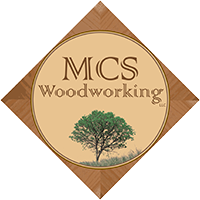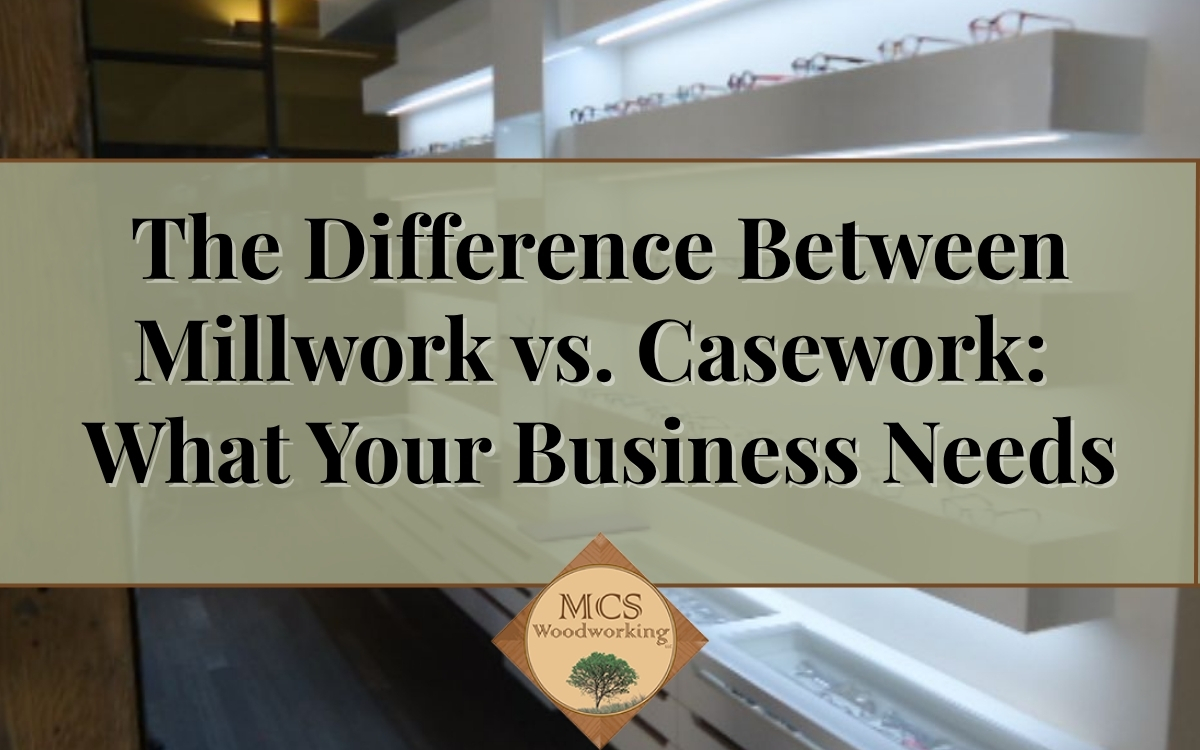When planning interior outfitting—whether a corporate lobby, retail display, or medical clinic—understanding the distinction between commercial millwork and commercial casework is crucial. Both involve custom woodworking, but they serve different functions, use different materials, and follow distinct production processes. This guide breaks down key characteristics, typical applications, and decision factors so you can select the right approach for your next commercial build-out.
What Is Commercial Millwork?
Millwork generally refers to custom architectural woodwork that integrates into a building’s structure.
- Scope: Includes trim, moulding, wainscoting, built-in paneling, crown moulding, custom doors, window casings, and decorative elements.
- Materials: Often crafted from solid hardwoods or engineered wood species, finished with stains, paints, or laminates.
- Installation: Typically installed in place (site-work), sometimes rough-cut in-shop and finished on-site to match walls and ceilings.
Millwork Characteristics
- Architectural Integration: Designed to complement and enhance a space’s structural features.
- High Customization: Profiles and details tailored to architectural blueprints.
Aesthetic Emphasis: Grain, texture, and finish quality are paramount. - Permanent Fixture: Becomes a core part of the room’s fabric and is not meant to be relocated.
What Is Commercial Casework?
Casework encompasses pre-manufactured or modular cabinetry and storage solutions.
- Scope: Includes kitchen cabinets, laboratory benches, reception desks, retail display cabinets, file storage units, and shelving systems.
- Materials: Uses plywood or MDF substrates with hardwood or veneer faces, plastic laminate, or solid surfacing for exposed panels.
- Installation: Assembled in-shop or on-site and installed as discrete units, often with adjustable components.
Casework Characteristics
- Flexibility: Modular design allows for relocation or reconfiguration.
- Function-First: Prioritizes storage capacity, durability, and utility.
- Manufacturing Precision: Shop-built to tight tolerances for uniformity.
Serviceability: Individual units can be serviced, refined, or replaced without affecting surrounding architecture.
Key Differences at a Glance
| Feature | Commercial Millwork | Commercial Casework |
|---|---|---|
| Function | Architectural finishes and detailing | Storage and functional cabinetry |
| Materials | Solid woods or engineered architectural woods | Plywood/MDF substrates with veneers or laminates |
| Installation | Integrated into walls/structure | Discrete, modular units |
| Customizations | Highly ornate profiles and trims | Modular sizes, standard hardware options |
| Mobility | Fixed, non-relocatable | Relocatable and reconfigurable |
| Typical Applications | Crown molding, paneling, built-in benches | Reception desks, office cabinets, lab benches |
When to Specify Millwork
- Brand-Defining Spaces: Lobbies, boardrooms, or hospitality areas where architectural character matters.
- Historic Restorations: Matching original trim profiles and wood species in heritage buildings.
- Seamless Integration: Where wood elements must align flush with drywall, ceiling, or built-in features.
- Decorative Impact: Custom wall panels, coffered ceilings, and elaborate mouldings that elevate interior design.
Example Millwork Projects We’ve Done
- A law firm’s walnut-paneled conference room with integrated custom lighting channels.
- A restaurant’s floor-to-ceiling wainscot featuring a unique fluted profile and backlit niches.
- Custom wooden vestibule doors and sidelights that frame a museum entrance.
When to Specify Casework
- Functional Storage Needs: Laboratories, medical offices, and educational facilities requiring durable cabinetry.
- Modular Office Layouts: Workstations, benching systems, and locker units that may need reconfiguration.
- Retail Display Fixtures: Gondolas, cash wraps, and merchandizing cabinets designed for product presentation.
Quick Turnaround: Standardized components with shorter lead times and simpler installation.
Example Casework Projects We’ve Done
- Hospital nurses’ stations with antimicrobial-laminate countertops and push-to-open cabinets.
- Retail eyewear displays combining clear acrylic shelves and laminate-faced cabinetry.
- Breakroom islands with integrated sinks, garbage pull-outs, and plastic laminate surfaces.
Material & Finish Considerations
- Millwork:
- Preferred Woods: White oak, maple, cherry, walnut
Finishes: Conversion varnish, catalyzed lacquer, oil-based stains - Casework:
- Substrates: Hardwood plywood, MDF, veneered panels
Surfaces: High-pressure laminate (HPL), PETG, solid surface (Corian® analogs)
Tip: Coordinate substrate transitions with adjacent millwork for seamless edges—e.g., matching veneer faces to trim species.
Budgeting & Lead Time Factors
- Millwork often involves complex profiles and on-site fitting, so plan for longer design and installation phases.
- Casework benefits from modular manufacturing, allowing for batch production and predictable pricing.
- Hybrid Approach: Many projects blend millwork and casework—e.g., custom millwork surrounds a modular reception desk.
Choosing the Right Partner
Selecting a woodworking firm experienced in both disciplines ensures a cohesive result:
- MCS Woodworking brings over 30 years of commercial project experience to both architectural millwork and casework.
Our 20,000-sq-ft facility in Menomonee Falls, WI, supports complex CAD/CAM workflows and separate assembly lines for millwork and casework. - From field measuring to detailed shop drawings and just-in-time delivery, we streamline communication and minimize on-site disruption.
Which Solution Suits Your Business?
Whether your next project demands the architectural elegance of millwork or the practical efficiency of casework—MCS Woodworking has you covered. Reach out today to discuss your requirements, compare options, and receive a tailored proposal that aligns with your vision, timeline, and budget.

